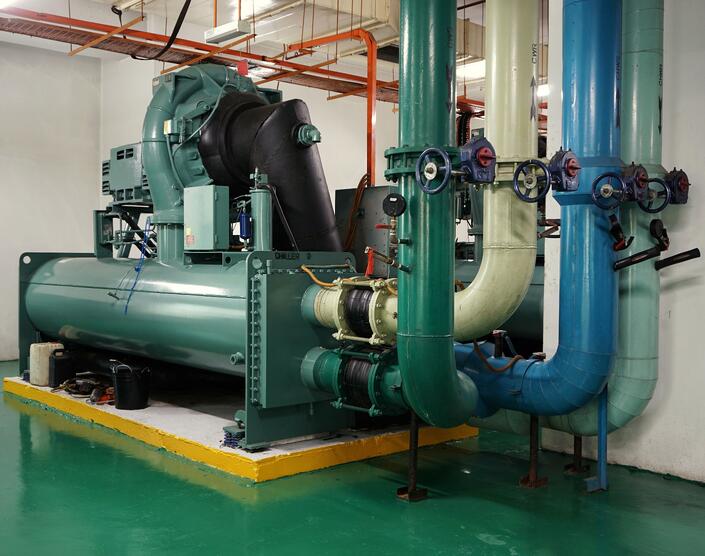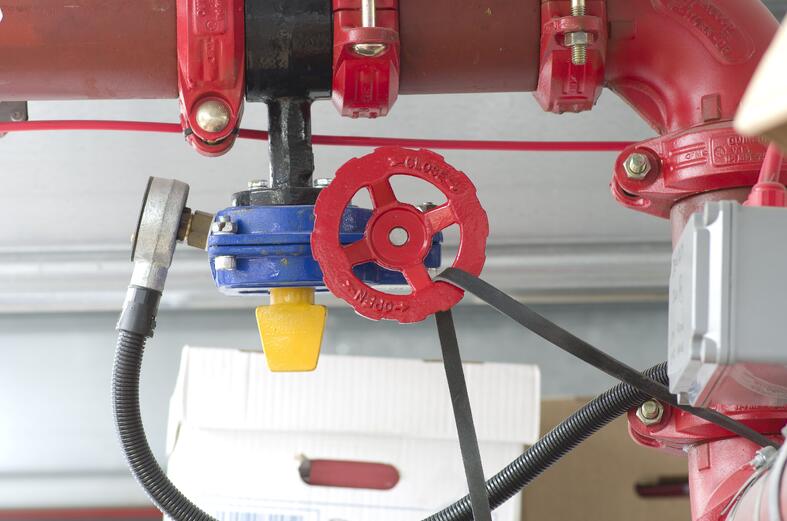Heat Exchanger Design
When it comes to heat exchanger designs, we are all about precision and accuracy. This makes or breaks the whole project.
Energy-efficient design is a necessity when it comes to heat exchangers and other MEP projects. NYE covers just that.
We want every project we make to last, and we support our clients by making sure we deliver the most durable results.

Whether you’re installing a heat exchanger in your home or are adding one to your commercial or industrial buildings, preparing a blueprint of your heat exchanger is imperative as this leads to a lot of benefits both short term and long term.
Whatever your reasons are for incorporating a heat exchanger in your building, we at New York Engineers will gladly help you in the preparation of your blueprint. We are a reliable team of MEP engineering designers in Chicago. We are experts in designing electrical, mechanical, and plumbing mechanisms and systems in your buildings. Everything we design is detailed, simple, and can easily complement your project requirements as we’re a flexible team of professionals.
From small offices spaces to large industrial infrastructures, we at New York Engineers are able to make concise and certified designs created using our latest MEP tools, resources, and software. So, if you’re in need of a reliable heat exchanger design, start your construction process with a blueprint from New York Engineers.
We induce life to your ideas with the latest technology and the most experienced team backing us up. For years, we have provided numerous clients with high-quality heat exchanger designs that help them visualize their project in a dynamic and enhanced way. We also make it easier for you to modify your model before the actual construction to avoid wasting time, money, and resources down the road. Every angle of your project will be covered thoroughly with precision and accuracy. We also offer a quick turnaround time. We understand that time is crucial in the field you’re in, and we do our best to meet clients’ demands the best way we can. Our experienced and approachable team will keep in touch with you throughout the design process. We understand the complexity of Heat Exchanger Design Detailing, and so we make sure that we let clients have a precise prediction of the heat exchanger performance. We review and incorporate details of the mechanical exchanger design into our software, analyze the thermodynamic performance, assess the fouling’s effects, develop predictions of the fluid pressure losses, do vibration analyses, and other key actions that determine the reliability of the exchanger early on.
We strive to offer the following:

To put it simply, a heat exchanger is used to transfer heat from one device to another. Heat exchangers can be used in a variety of devices – hydraulic oil coolers or even swimming pools. The process is straightforward in general, it’s simply a device that exchanges heat regardless of where this heat comes from. The heat that’s gathered is transferred with the use of the exchanger materials. There are two types of heat exchangers that you can choose from – the Tube and Shell type and the Plate type, and we at New York Engineers can design both.
Why should you install one? Well, aside from there multiple benefits, some building structures and features require to have one. Plus, they bring in the following benefits:
Heat exchangers, especially the modern ones are adaptable devices. This makes them suited for multiple types of tasks. Heat exchangers are now even more compact than ever, making them convenient to install, especially on smaller items.
Heat exchangers have a simple model. That’s why they can be applied to a lot of industrials mechanisms, items, and systems. This is why you can see heat exchangers not only in usually residential and commercial buildings but industrial facilities like nuclear plants, sewage treatment areas, petroleum refineries, and chemical plants.
Today, we’re all about efficiency. So, here at New York Engineers, we make sure to only design the latest heat exchangers. We can design low-cost heat exchangers that are resistant to chemical reactions and corrosions, cutting down maintenance costs significantly.
Heat exchangers, as they’re crucial additions to any building, should be built without complications. Though they’re fairly easy to install and have a generally straightforward mechanism, there are still instances wherein complications occur during the construction process.
Hence, New York Engineers would love to step in and guide you so that you can decrease your chances of committing errors. If you’re interested, here’s what you need to know about our services:
Before anything else, we start the designing process with the initial planning. Here, we will discuss the entirety of the project. This includes the budget, the building, the materials included in the construction, and the like. We would also collaborate with you so that we’ll be able to know your requirements and preferences.
The site visit is next after we’ve discussed all of the important details. We’ll send a team to do a general inspection. This is done so that we’ll have a general idea of the location. During this process, you’ll be asked some basic questions like what the building or item’s measurements are and what materials you’re going to use for the construction.
This is to ensure that we have all the needed information first before starting the designing process. This is a crucial step in the process, so we encourage you to prepare all the necessary information, details, and documents before we arrive to speed up the process.
After gathering all the needed details, we will start the designing process. Our designing process starts by gathering our designers, those who would best fit to create a heat exchanger blueprint. Then, we’d explain your project requirements and instructions. All the gathered details are discussed so that our team will fully grasp the whole concept of the project.
Once the designing team is ready, they’ll start designing. Our team only uses the most updated and reliable software and tools during this process. So, we’re confident that we’ll only be producing top-notch designs from the best MEP designers in Chicago.
After designing the initial blueprint, we will do a team collaboration. We may visit your site again or call you to discuss the output. This is where certain adjustments are made.
In every construction stage, errors and adjustments become inevitable. We are here to eliminate any errors and give you an easy way to simulate the actual project beforehand. Once you receive the draft, we will make the necessary changes, if there are any, and send the design back to you.
This is the final step in the designing process. Here, we will send the final design your way. We have a high approval rate, and our designs are usually approved quickly. This is mainly because we have already dealt with multiple heat exchanger projects, big and small. And we already know how it all works.
As stated above, it’s always beneficial when you start a comprehensive process such as construction with a detailed plan – in your case, a clear design of your heat exchanger.
There are several advantages when you design your heat exchanger beforehand, and here are the reasons why:
Once starting the construction, you can make more informed decisions since you already have a clear and comprehensive design to guide you.
You have a design to guide you during the construction process, thus narrowing all the outcomes. You only have one destination and that is a functioning heat exchanger installed in your building without errors and hiccups.
The accuracy we promise will avoid unnecessary wastage. You will be able to maximize your materials since you have a blueprint with you, and all components of the projects are taken into consideration early on.
We can help you estimate the budget beforehand. We make sure you don’t run into budget overruns as we use accurate tools to proceed with proper cost estimation throughout the whole design stage.
As our design is already complete, you don’t have to spend so much time planning. Everything is prepared for you, so this allows the construction to flow smoothly.
We at New York Engineers offer MEP engineering designs that would significantly reduce your costs, optimize your energy efficiency, and boost your building or item’s performance in general.
We have the best and the most structured processes and detailed designs in the Chicago area. Here are the specific reasons why you should hire us:
We have some of the most professional and expert designers in town. Our team makes visuals that are based on the fundamentals of engineering, so we can pull off any related designs spot on. We’re also not only adept in creating these designs, but we’re also constantly learning the latest technologies and methodologies to keep our designs advanced and up to the mark.
This goes hand in hand with our interest in learning more tools, resources, and software to better our services. Thus, we only make our designs with the most updated methods. Aside from using CAD software or Multidisciplinary BIM software, we’re also on the lookout for better resources that we can use to build designs.
Whatever timeframe that you have in mind, we can adjust and collaborate with you to determine a reasonable duration for the project. Everything that we do follows a strict and structured process, so all of our procedures are done quicker. We value time and we know that construction is not a simple process to do, especially if we’re dealing with a huge project, so we make it a point to polish our standard procedures to promote faster processes and make your project completion worry-free.
We’re one of the most reasonably priced teams when it comes to MEP engineering designs. So, if you’re tight in budget or only have a particular budget in mind, then we’d be happy to give you a customized design that would best fit your budget. Because we’re into optimization, everything, from our software to the materials that we use in creating the designs, we made sure to follow cost-cutting measures to decrease costs significantly.
Because we’re making designs from only advanced tools and software, our blueprints downright accurate. In this way, you’re less likely to have errors in the construction process. Using our design will not only create an effective heat exchanger for your building but also a safer and less costly one.
New York Engineer is not only made up of technicians alone, but we also have researchers and knowledgeable engineers in the team. In this way, we are able to delegate our tasks in a swifter and more efficient way.
Not only are our engineers and designers knowledgeable in terms of our services but our customer support team as well. Here, our support team will answer and entertain all of your concerns, questions, and suggestions.
We at New York Engineer is ready to provide you with a detailed and clean design of any engineering project you have in mind – in this case, a heat exchanger. Aside from this, we also have a variety of services under electrical, mechanical, construction, engineering, plumbing, and a lot more. On top of these, we’re proud to let you know that we have certified designers and engineers in our team, making us a specialized MEP design group that you can trust in the Chicago area.
If you want to have a heat exchanger design right away, we at New York Engineer will not let you down. Just leave your message on our contact us page and we’ll get into action immediately. We are your one-stop team when it comes to all of your MEP and engineering needs.